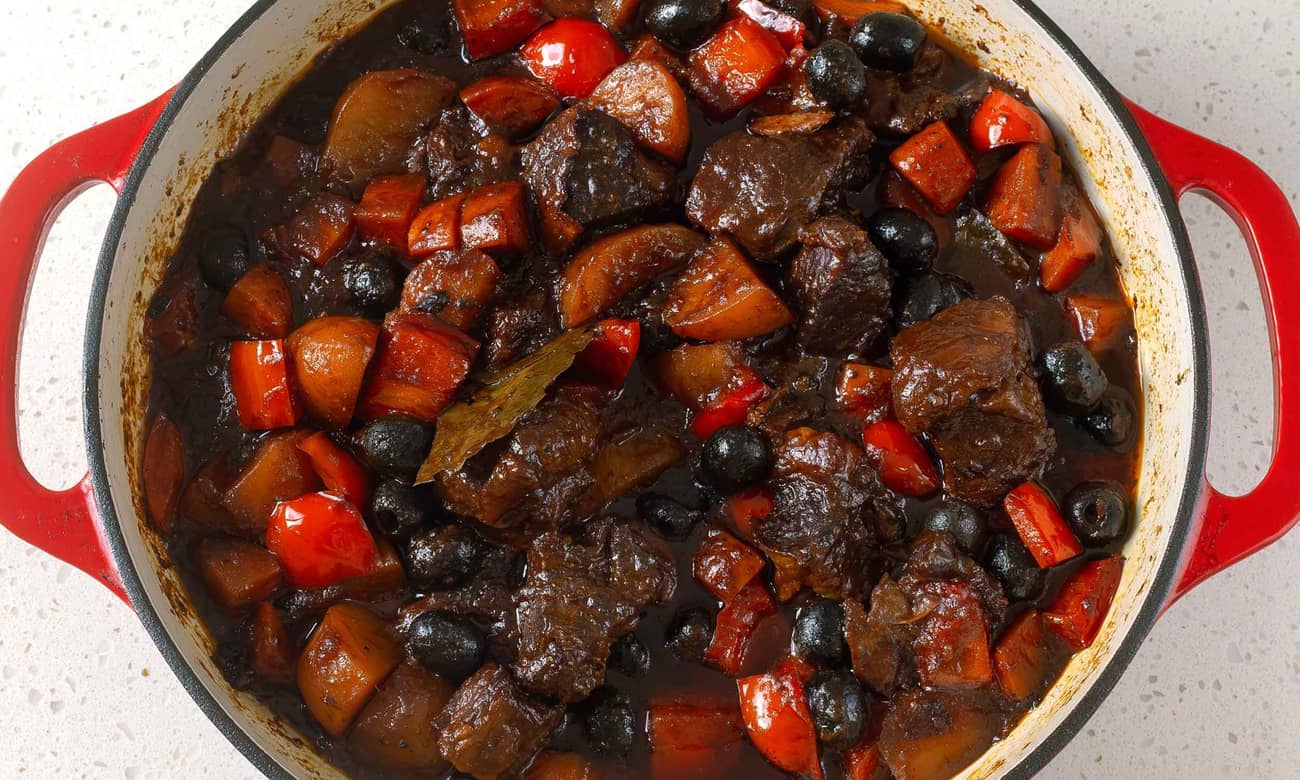
Instead of searing, simmer beef tapa with onions and serve it over rice like gyudon.
If you think about it, turning Filipino beef tapa into gyudon makes sense. Both dishes have thin beef slices in a mildly sweet, umami-rich sauce. When you simmer tapa in dashi with onions, layer it over rice, and top it with a runny egg, you get a Pinoy breakfast favorite dressed as Japan’s classic beef bowl. Waking up to this Japanese-style tapsilog will put the good in your mornings.
Umami is essential to Japanese cooking. For this recipe, we’re using these Japanese pantry staples to get that flavor down:
Gyudon uses fatty cuts of beef sliced paper-thin, about ⅛-inch thick. In supermarkets, these are often labeled as “samgyeopsal”, “hotpot beef”, or “beef bacon”. We use these cuts in our and

We don't just copy random recipes. We taste test every single one.
Easily search and save your favorites.
Chefs develop our food with techniques made easy for home cooks.
This recipe uses lean sirloin sliced ¼-inch thick. While it’s not the typical cut used for gyudon, it veers closer to your classic tapa. Plus, a lean cut like sirloin benefits from gyudon’s simmering time, gradually becoming more tender as it cooks.
When choosing beef cuts in groceries, pre-sliced beef like “sukiyaki cut” or “breakfast steak” can come in different thicknesses. For consistency, it’s better to buy a chunk of sirloin and slice it at home.
To slice sirloin yourself, par-freeze your beef by placing it in the freezer for 20-25 minutes. You don’t want a completely frozen piece of meat. The goal is to freeze the fats in the beef to make cutting easier. Use a sharp knife to slice the sirloin to your desired thickness, and you’re all set.
You may have eaten at Japanese restaurants where their gyudon is topped with a delicately cooked egg. These aren’t just regular poached eggs—they’re onsen eggs.
Named after Japan’s natural hot springs, onsen eggs have a custardy yolk and soft, slightly set whites. Unlike poached or soft-boiled eggs, they cook at a lower temperature for a longer period, usually around 145°F (63°C) for about 30 to 45 minutes.
This gentle heat lets the proteins slowly coagulate, forming that smooth, delicate texture. You can emulate the hot spring environment by using a thick, heavy-bottomed pot that traps heat well, like a Dutch oven or a ttukbaegi (Korean earthenware pot).
To make onsen eggs:
You can make onsen eggs ahead of time! After cooking, keep them uncracked in the fridge for up to 2 days.
